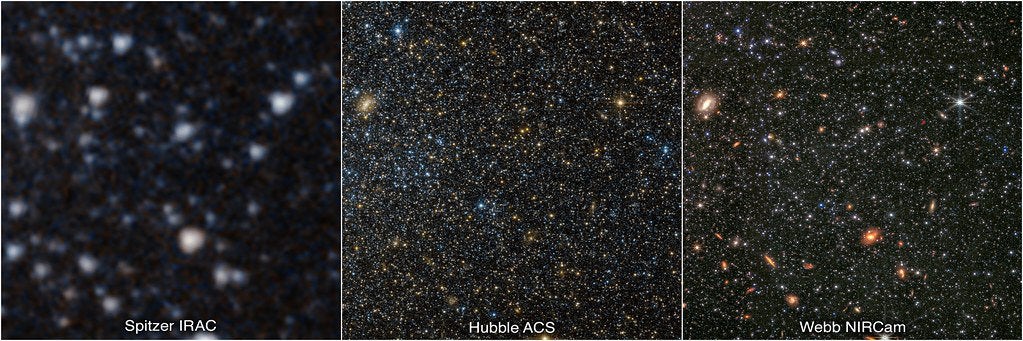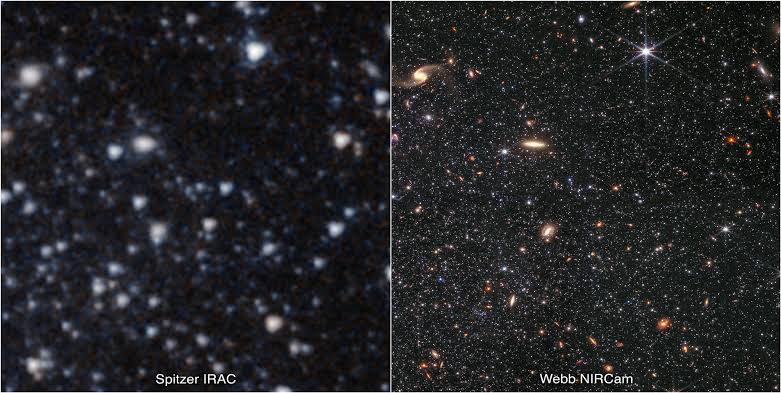In our local galaxy, WLM is a dwarf galaxy. Although it is just around 3 million light-years away from Earth, it is nevertheless extremely remote despite being close to the Milky Way. It’s great for testing our theories of galaxy creation and development because we believe WLM hasn’t interacted with other systems. It is more difficult to investigate many of the other nearby galaxies because of how they are entangled and interwoven with the Milky Way.

The gas that makes up WLM is similar to the gas that formed galaxies in the early universe, which is another intriguing and significant feature of the object. Chemically speaking, it’s not very enriched. It lacks elements heavier than hydrogen and helium, in other words.
What Is The Reason?
This is due to a phenomenon known as galactic winds, which caused the galaxy to lose many of these components. Even while WLM has recently—in fact, throughout all of cosmic time—been producing stars and those stars have been synthesizing new elements, some of the material is evacuated from the galaxy as the huge stars burst. Small, low-mass galaxies like WLM can have material pushed out of them by supernovae that are strong and energetic enough.
Since you can use WLM to examine how stars develop and grow in tiny galaxies like those in the early cosmos, this makes WLM extremely fascinating.
How Does It Feel To Watch These Stars?
It is just amazing. Observing this on the dome is similar to standing in the dark and gazing up at the Milky Way in our own night sky.
Numerous stars of various shapes, ages, temperatures, and stages of evolution are seen, as well as intriguing nebular gas clouds within the galaxy, foreground stars with Webb’s diffraction spikes, and background galaxies with unusual characteristics like tidal tails. It’s a pretty beautiful picture.
Of course, the view is richer and deeper than our eyes are capable of seeing. You would require bionic eyes to be able to see what Webb sees, even if you were standing on a planet in the center of this galaxy and could see infrared light.
What Is The Objective Of WLM?
Reconstructing the galaxy’s star formation history is the primary scientific goal. Given that low-mass stars can last for billions of years, some of the stars in WLM that are visible now formed in the early cosmos.
We may learn more about the characteristics of these low-mass stars, such as their ages, and hence learn more about what was happening in the incredibly distant past.
By observing high-redshift systems, where we can view galaxies as they were when they initially formed, we can learn a lot about the early formation of galaxies.
The purpose of the Early Release Science programmes was to showcase Webb’s capabilities and aid astronomers in getting ready for upcoming observations.
How Is This Work Assisting Other Astronomers?
The NIRCam instrument’s calibration is being examined. The stellar evolution models are being checked. Additionally, researchers are creating software to measure star brightness.
Hubble has already been used to conduct extensive research in this exact same topic. Now that they’re using Webb to study near-infrared light, researchers are utilizing WLM as a kind of benchmark for comparison (much like you’d use it in a lab) to comprehend the Webb data.
Researchers have to be extremely precise and accurate when measuring the brightness of the stars.
Conclusion
Additionally, researchers are tasked with creating a freely available software tool to calculate the brightness of each resolved star in the NIRCam photos.
Each person will be able to use this non-proprietary tool. The software is currently being developed, tested, and the measurement parameters are being improved.
For astronomers throughout the world, this will become a fundamental instrument. You need a tool like this if you want to do anything with resolved stars that are clustered together in the sky.
